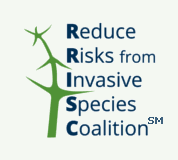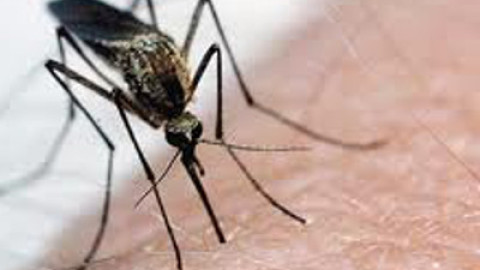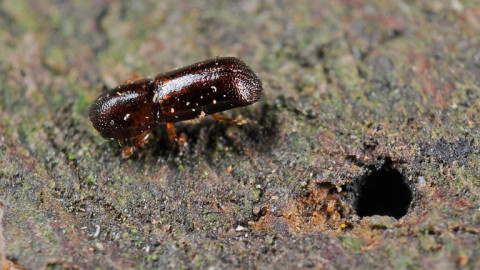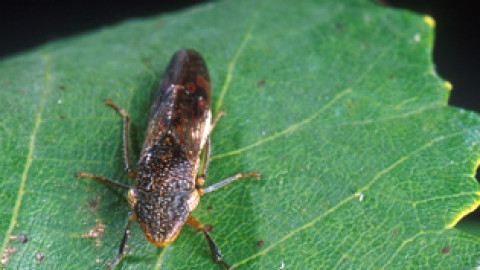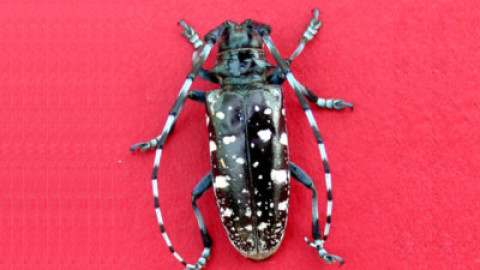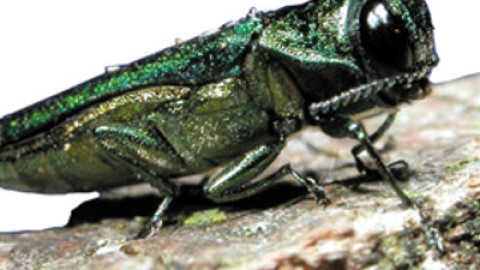Asian Gypsy Moth (Lymantria dispar asiatica and L. dispar japonica) are foreign pests native to Russia, China, Japan and other Far East countries. The Asian variety differs from the European gypsy moth – which is widespread in eastern North America – in two ways: the female can fly up to 20 miles, and it feeds on a wider variety of trees and shrubs, including pines, spruce, and other conifers. If moths reappear in one area for a few seasons in a row, trees will often die, and forests have the potential to be wiped out. A Cornell University study noted that caterpillars feed on over 500 types of foliage. Additionally, in their caterpillar stage, Gypsy Moth droppings and “silk strands” are difficult to clean and can be troubling for residential areas and businesses.
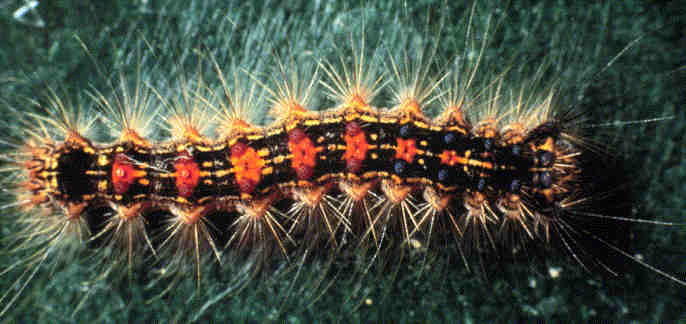 First reported North American sightings are believed to be in 1991, after an infested Russian ship came to the US. Gypsy Moth eggs are often attached to stable, solid objects, such as under rocks, furniture, and gutters. The unique visual feature of these eggs is their yellow colored fuzz. In springtime, caterpillars hatch from the eggs and feed voraciously until full adult moths complete their transformation 10-14 days later.
First reported North American sightings are believed to be in 1991, after an infested Russian ship came to the US. Gypsy Moth eggs are often attached to stable, solid objects, such as under rocks, furniture, and gutters. The unique visual feature of these eggs is their yellow colored fuzz. In springtime, caterpillars hatch from the eggs and feed voraciously until full adult moths complete their transformation 10-14 days later.
In addition to damage, the Asian Gypsy Moth has the power to move very easily. Because their egg masses attach firmly onto most hard surfaces, they are being found on ship superstructures and shipping containers coming to the US. Since the 1990s, the U.S. and Canada have required that ships leaving Russian ports inspect and clean off all gypsy moth eggs before reaching North America. In 2012, this requirement was extended to ships from Korea, Japan, and parts of China. However, infested ships have continued to arrive at North American Pacific (and some Atlantic) ports – especially ships from Japan and Russia. The Bureau of Customs and Border Protection and its Canadian counterpart require that these ships leave North American waters and clean of the egg masses. This requirement has resulted in considerable delays. And even after thorough inspection, some make it past customs. U.S. and Canadian officials are working with counterparts from Asia to improve compliance with the requirements with the goal of limiting the number of moths coming to North America.
For further reading on the Asian Gypsy Moth, consult the link below.
http://www.nappo.org/en/data/files/download/PDF/RSPM33-10-08-09-e.pdf
